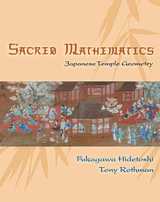
There are a few questions of Sangaku which are related to tangent spheres. For instance, the following problem appears in Fujita Kagen’s 1796 edition of Shinpeki Sanpo. (Collection of Fukagawa Hidetoshi.)

The translation of this problem given in the "Sacred mathematics" is
"Twenty small balls of radius r cover one big ball of radius R where each small ball touches three other small balls. Find R in terms of r."
Another problem related to the bead model of C20 appeared in 1830 book Sanpo Kisho, or Enjoy Mathematics Tablets, by Baba Seitoku (1801–1860)

In this problem, small spheres correspond to beads that represent 30 edges of a dodecahedron.
To illustrate these two problems, Mr. Horibe made a beautiful, but non-standard bead model consisting of 20 ping-pong balls punctured with three holes at suitable places in order to connect them with an elastic rubber string. Of course, this model is a dodecahedron with ping-Pong balls located at the 20 vertices. Using the similar technique, he also made a bead model of an icosahedron consisting 12 Ping-Pong balls located at the vertices too.

To illustrate the second problem with 30 small spheres in touch with a large central sphere, Mr. Horibe did something even more amazing. He tried to make a composite bead model for the problem 2. This model consists of 30 small spheres outside (i.e. a dodecahedron) and a large sphere inside with small and large spheres satisfying the correct ratio of their radii, i.e. R=sqrt{5} r. This was a difficult task. Mr. Horibe quickly realized that it was very expensive to ask people to made two wooden beads exactly with this ratio. So he could only look around for different kind of balls in many stores in Japan, particularly he always brought a calculator and a ruler with him to measure if he was lucky enough to find out just the right beads that satisfied this condition. Quite fortunately, he found out a right size of metal ball for the central large sphere. So he made two nice models, one for Fukagawa and another for himself, for the famous Sangaku problem. In the following pictures I took at Nagoya's Children and Family Center, you can see how Mr. Horibe stretched the small spheres apart and pull the inner large sphere out. It was quite a show.

No comments:
Post a Comment